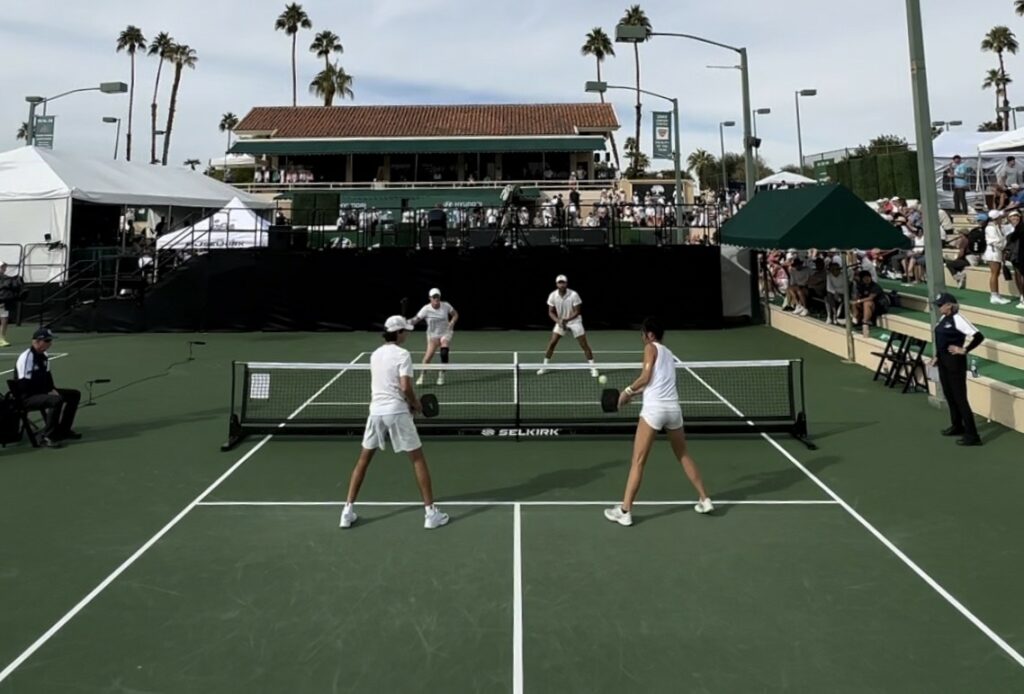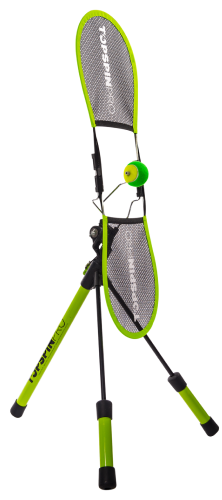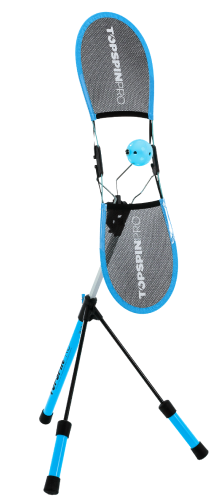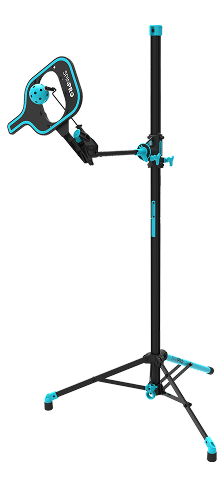
What we'll cover in this article:
Stay in the loop!
Want to be updated when we publish? Be sure to sign up for our newsletter. No spam, we promise!
What Is A Volley?
A volley is any shot you hit where the ball does not touch the ground before you strike it. In theory, you can volley from anywhere on the court. But, tactically we want to be volleying our shots when closer to the net and up at the NVZ (Non-Volley Zone) line. This is because it's easier to control a volley here and there's more opportunity to attack and hit it down into the court.
Why Volley?
Rather than staying back at the baseline, volleying allows you to be more offensive. First, you cut down their reaction time by being closer to your opponents. Second, it’s easier to hit angles and pressure your opponents by being closer to the other side of the court. That’s why we look to get to the net as fast as possible, especially when playing doubles. In singles, it’s a little different as it’s harder to cover the whole court. So players tend to stay back more until the opportunity arises to get to the net.
What Is The Non-Volley Zone?
The Non-Volley Zone is as it sounds, an area where you cannot stand to volley the ball. This NVZ was included in the game because it’s too easy to win the point if you are right up at the net. The points would become too short and boring. So now we have epic rallies up at the NVZ and long, more intense, and tactical points!
Non-Volley Zone Rules
The NVZ rules can sometimes be a little confusing. The most fundamental part is that you cannot step into the NVZ with your foot at any time while executing a volley. You can, however, strike the ball inside the NVZ with your paddle. So you can reach inside to volley as long as your feet are outside. It gets a little more complicated and harder to monitor at the rec level because your feet may not touch the NVZ at any time during that shot's motion. So you cannot push off to volley from inside the kitchen or land inside to balance after striking the ball. You must always remain outside until you have finished executing that shot. Tough to monitor for even the most seasoned Ref!
Types Of Volley
Punch Volley
A punch volley can be executed with a quick sharp movement through the ball. Having a flatter and slightly open paddle face allows you to place it toward your target area. This is the easiest type of volley when the ball is traveling at you quickly or if you want to accurately place the ball.
Roll Volley
The roll or topspin volley is helpful for lower or medium-height volleys, where you have to lift the ball back up over the net and drop it into the court. Adding topspin helps the ball drop sooner. It’s also great for aggressive shots above net height where you can use the topspin to help keep it controlled (such as rolling it at your opponent’s feet).
Drop Volley
As it sounds, the drop volley is when you place the ball short and close to the net. A great tactic if your opponent is at the baseline and pushed back. The drop volley is perhaps the hardest to execute well. It requires a softening of the hands to take the pace of the ball. It can be likened to catching the ball with your paddle.
Dink Volley
A dink volley is hit when up at the NVZ line. It’s usually hit in response to a deeper dink from your opponent, where it’s better to volley it than to move back and play an awkward shot. The key here is to dink it back into the opposing kitchen without popping it up too high, allowing them to attack.
Volley Tips
Ready Position
Have an athletic ready position. Don’t be flat-footed. Stay on your toes and be ready to react and move, keeping your paddle in front. When transitioning to the NVZ line try to get into your ready position before your opponent strikes the ball.
Watch The Ball
This sounds so simple but is very hard to do when the ball is traveling quickly toward you. Allow your body to turn and face the ball at all times, making it easier to keep your eyes focused.
Spin
Learning to add either slice or topspin to a volley increases your chance of success and provides more options in your arsenal.
Contact Point
The key to having a solid volley is to make contact out in front. This provides more power, paddle stability and accuracy. It’s also easier to keep your eyes on the ball. To achieve this keep a short backswing. Visualize pushing the ball vs hitting it.
Placement
Rather than randomly hitting it, know in your mind where you are aiming the ball. If you have a planned strategy, it becomes easier to execute the technique. If in doubt always go for the most consistent choice.
Here are some extra tips from Pro Tyson McGuffin:
Summary
The hardest part of becoming a successful pickleball volleyer is learning to make the proper shot selection. When the ball travels at speed, first, it's hard to judge whether it's going in or out, and second, you have a tiny amount of time to decide where to hit it. It can often be tempting to get into a slam battle and whack that ball as hard as possible! Placement always beats power, but we know how fun it is to crush it! Watching the pros is simply the best education you can have. Just taking a few tips from them can enormously impact our game. So try watching some regular pro pickleball to get some extra tips!
Let us know in the comments below if we missed anything you want to see in our blog. Also, share to your social pages if you think of anyone who may benefit from these tips
FAQs
-
What is a volley in pickleball?
A volley is any shot you hit where the ball does not touch the ground before you strike it. It is best executed close to the net, especially at the NVZ (Non-Volley Zone) line for better control and attack opportunities.
-
Why is volleying important in pickleball?
Volleying allows you to be more offensive by cutting down your opponent’s reaction time and applying pressure with angles. It’s particularly crucial in doubles to get to the net quickly, while in singles, players stay back until they find the right moment to move forward.
-
What is the Non-Volley Zone (NVZ)?
The NVZ is an area where you cannot stand to volley the ball, designed to make the game more challenging and engaging. It ensures longer, more tactical rallies by preventing easy points from being won right at the net.
-
What are the rules for volleying in the NVZ?
You cannot step into the NVZ with your foot while executing a volley, but you can reach in with your paddle. Your feet must stay outside the NVZ during the shot’s motion, making it a challenge to balance and execute properly.
-
What are some key tips for effective volleying?
Maintain an athletic ready position, watch the ball closely, add spin for control, make contact in front of your body, and have a clear placement strategy. These tips help in achieving more accurate and powerful volleys.
Links Related to This Article
Enjoyed this article?
Be sure to sign up for our newsletter and we'll keep you up to date about new posts




